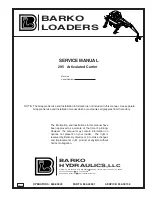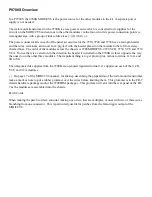
Operator's Manual
Function
Definition
Ratio
For every point in the waveform, the value of Source1 is divided by the value of Source2.
Source1 and Source2 must have the same horizontal units and scale.
Reciprocal
For every point in the waveform the inverse is calculated using the formula:
1 / (sample value)
Rescale
For every point in the waveform the sample value is multiplied by the specified multiplier and
then add to with the specified adder. See
Rescaling and Assigning Units
.
Roof
Calculates the highest vertical values of a waveform at each horizontal value for a specified
number of sweeps.
Segment
Selects one segment from a source waveform to place in a sequence waveform. Used in
Sequence sampling mode.
Sinx/x
Performs10 -to-1 interpolation using a Sin(x)/x filter.
Sparse
“Thins,” or decimates, an incoming acquisition by dropping sample points at regular intervals.
Sparsing factor specifies the number of points to drop between retained samples (e.g., factor of
4 retains 1 then drops 4). Sparsing offset specifies the point at which to begin applying the
sparsing factor (e.g., offset of 3 begins count on the third sample (3), then drops the number of
samples specified by the sparsing factor (4).
Square
For every point in the waveform, the square of the sample value is calculated.
Square Root
For every point in the waveform, the square root of the sample value is calculated.
Sum
For every point in the waveform, the value of Source1 is added to the value of Source 2.Source1
and Source2 must have the same horizontal units and scale and the same vertical units.
Track
Generates a waveform composed of parameter measurements that is time synchronous with the
source waveform. The vertical units are those of the source parameter value and the horizontal
units are seconds. Parameter values are posted at the sampling rate.
Trk
Same as Track, with alternate transition types.
Trend
Produces a waveform composed of a series of parameter measurements in the order the
measurements were taken. The vertical units are those of the source parameter, the horizontal
unit is measurement number. The trend contains a single value for each measurement. See
View Trend
.
Zoom
Produces a magnified trace of a selected portion of the input waveform. See
Zooming Traces
.
Interpolation
Linear interpolation, which inserts a straight line between sample points, is best used to reconstruct
straight-edged signals such as square waves. (Sinx)/x interpolation, on the other hand, is suitable for
reconstructing curved or irregular waveshapes, especially when the sampling rate is 3 to 5 times the
system bandwidth. The instrument also gives you a choice of Cubic interpolation. For each method, you
can select a factor from 2 to 50 points by which to interpolate (upsample).
1. Follow the usual steps to
set up a math function
, selecting
Interpolate
from the
Filter
submenu.
2. Touch the
Interpolate
tab in the mini setup dialog to the right of the main dialog.
3. Touch inside the
Algorithm
control and select an interpolation type.
4. Touch inside the
Upsample by
control (Upsampling is the factor by which sampling is increased) and
enter a value.
922499 Rev B
73
















































